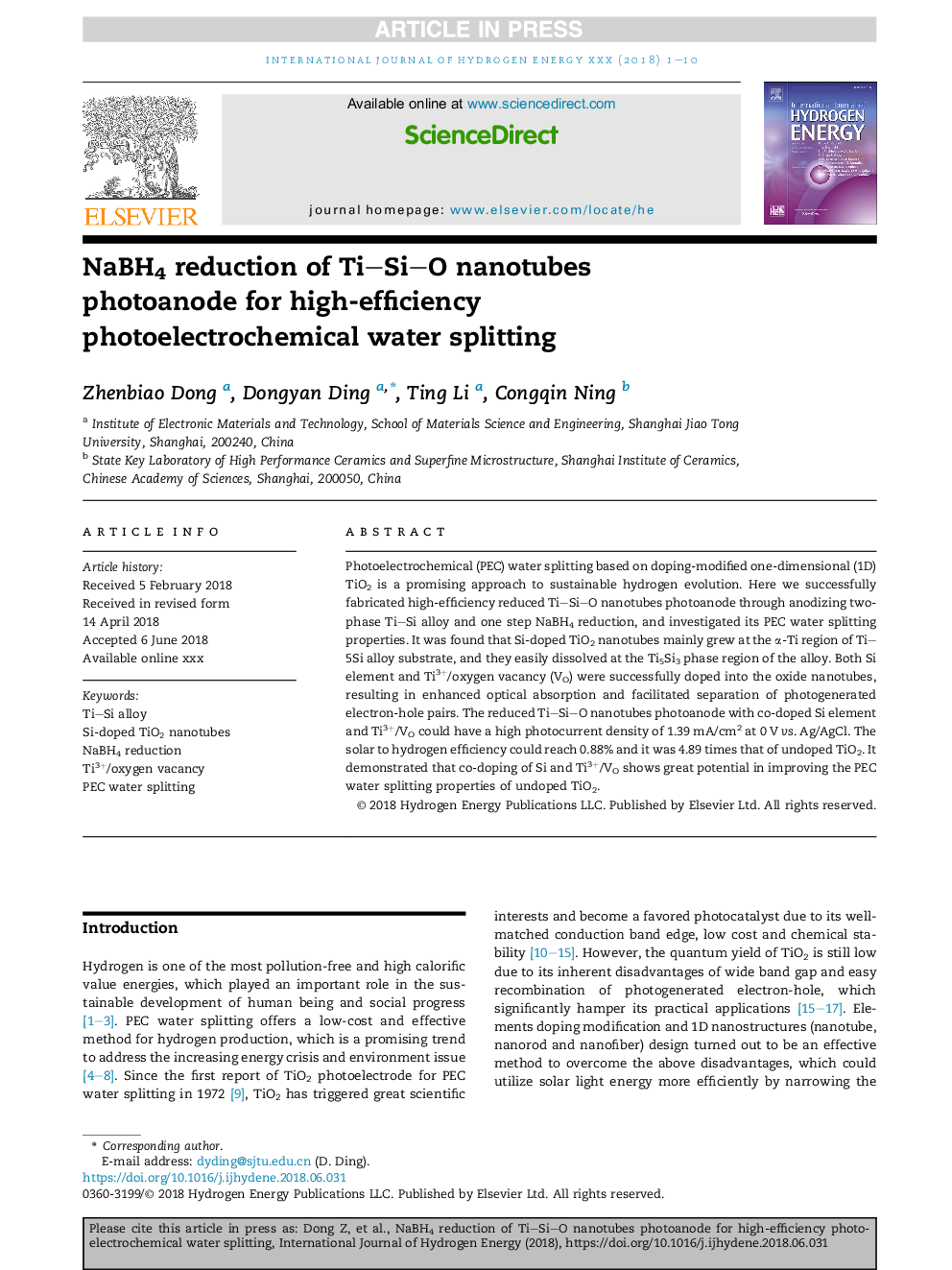| Article ID | Journal | Published Year | Pages | File Type |
|---|---|---|---|---|
| 7705276 | International Journal of Hydrogen Energy | 2018 | 10 Pages |
Abstract
Photoelectrochemical (PEC) water splitting based on doping-modified one-dimensional (1D) TiO2 is a promising approach to sustainable hydrogen evolution. Here we successfully fabricated high-efficiency reduced TiSiO nanotubes photoanode through anodizing two-phase TiSi alloy and one step NaBH4 reduction, and investigated its PEC water splitting properties. It was found that Si-doped TiO2 nanotubes mainly grew at the α-Ti region of Ti5Si alloy substrate, and they easily dissolved at the Ti5Si3 phase region of the alloy. Both Si element and Ti3+/oxygen vacancy (VO) were successfully doped into the oxide nanotubes, resulting in enhanced optical absorption and facilitated separation of photogenerated electron-hole pairs. The reduced TiSiO nanotubes photoanode with co-doped Si element and Ti3+/VO could have a high photocurrent density of 1.39 mA/cm2 at 0 V vs. Ag/AgCl. The solar to hydrogen efficiency could reach 0.88% and it was 4.89 times that of undoped TiO2. It demonstrated that co-doping of Si and Ti3+/VO shows great potential in improving the PEC water splitting properties of undoped TiO2.
Keywords
Related Topics
Physical Sciences and Engineering
Chemistry
Electrochemistry
Authors
Zhenbiao Dong, Dongyan Ding, Ting Li, Congqin Ning,
